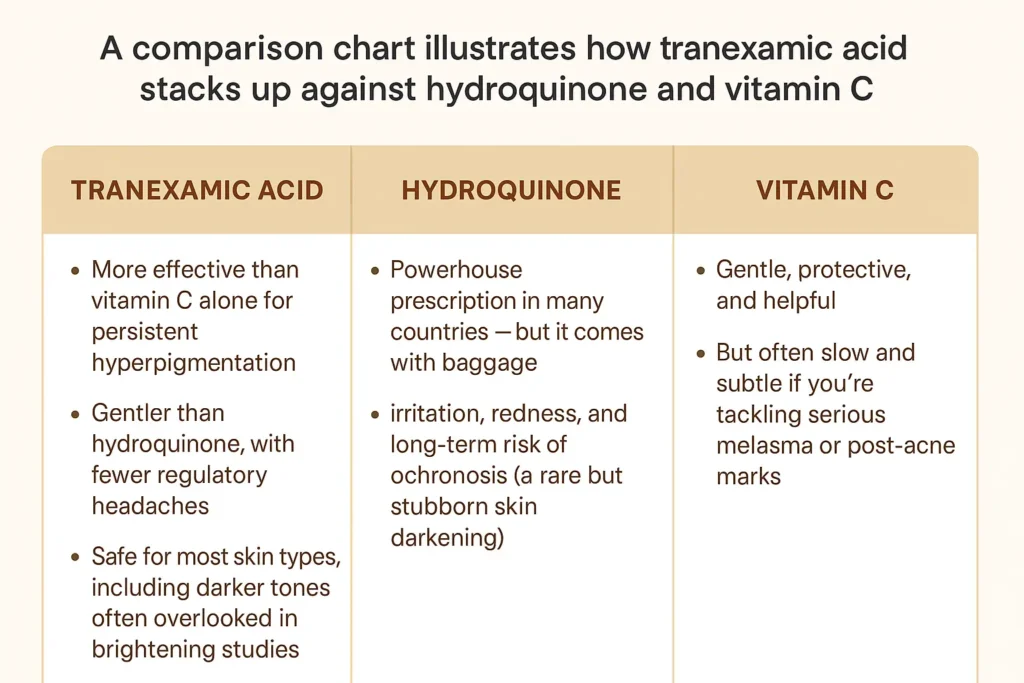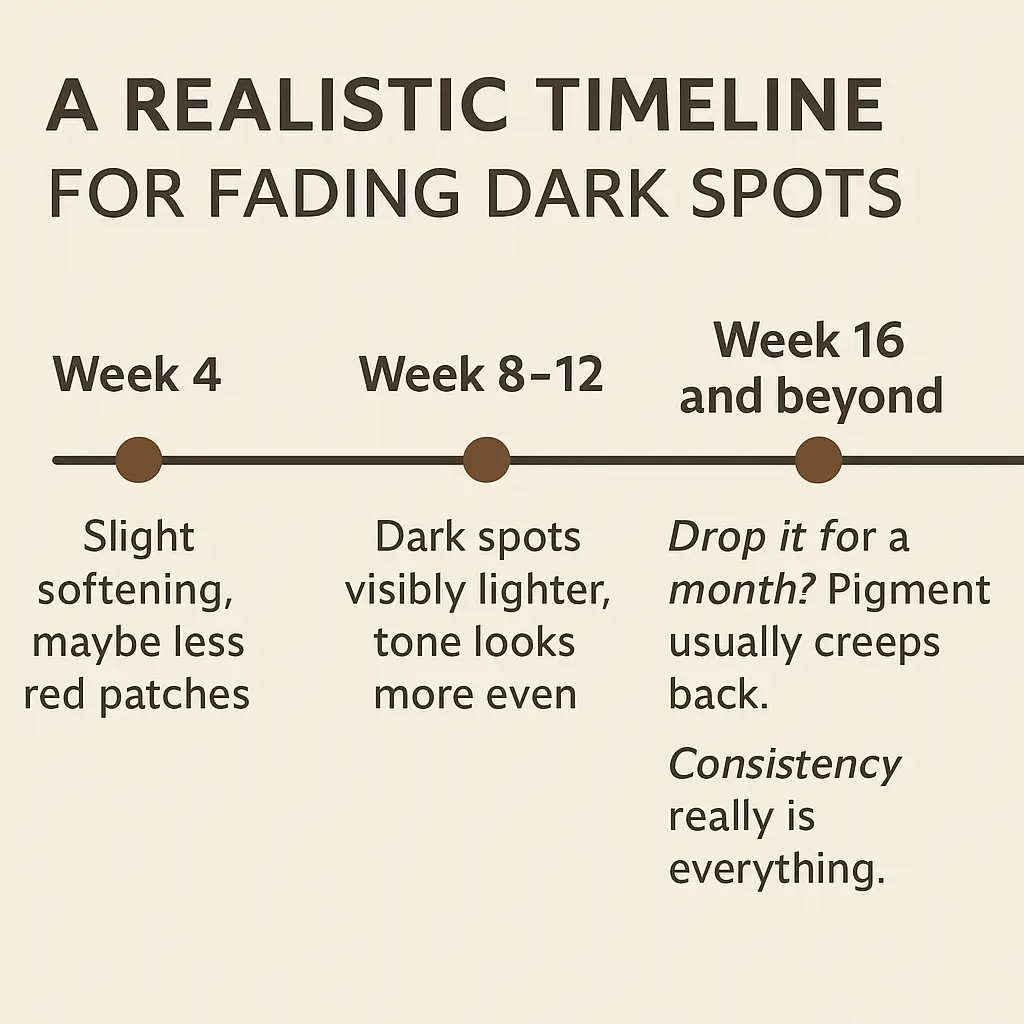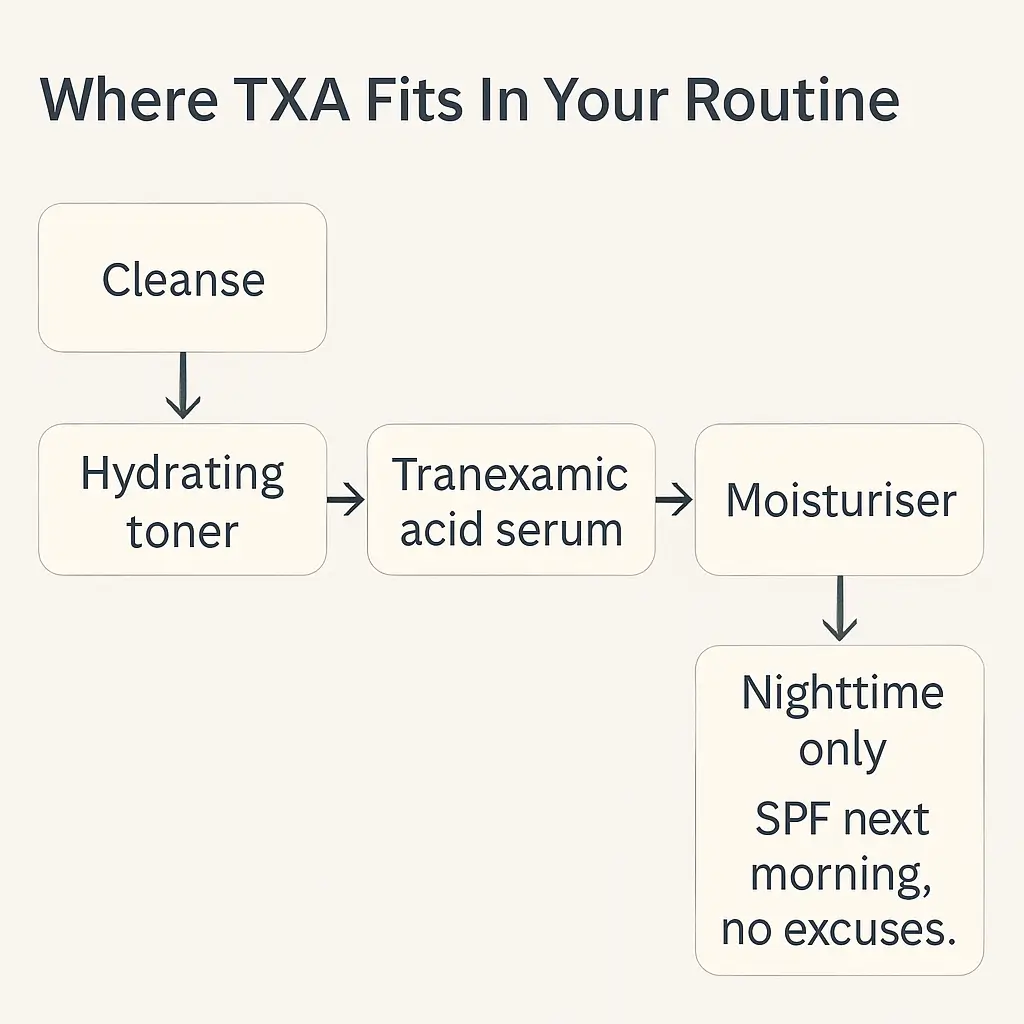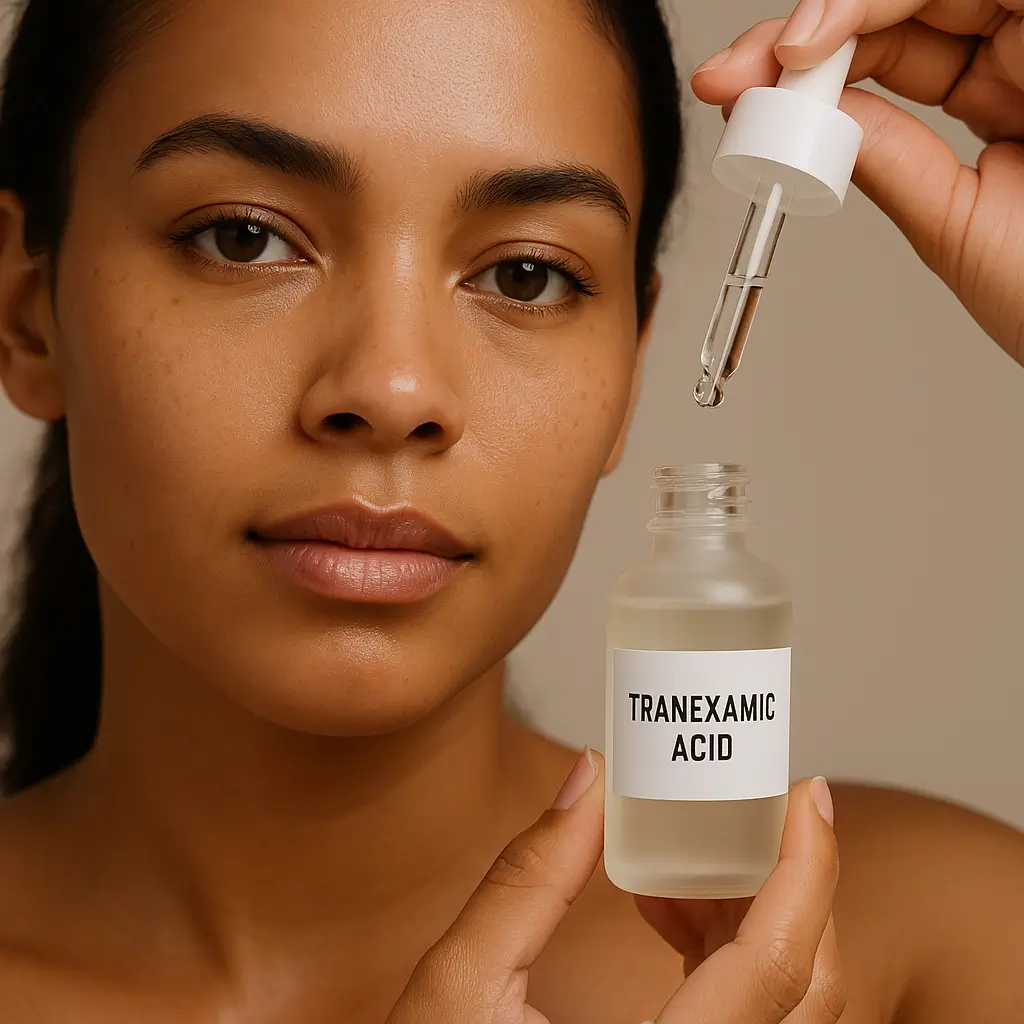For years, many people battling stubborn dark spots and patchy tone felt stuck between two choices: harsh bleaching creams with side effects or endless vitamin C serums that never quite did enough. Then tranexamic acid quietly slipped into the conversation — a clotting medication turned unlikely skincare saviour. Fast forward to 2025, and it’s everywhere: dermatologists recommend it, brands brag about it, and Google searches for it have doubled in less than a year.
But unlike trendy buzzwords, this one is backed by real studies and real patient stories. So, how exactly does a blood coagulant end up transforming dark spots? Let’s break down what the best articles miss — and what your skin actually needs to know.
From Hospital Corridors to Vanity Counters
Tranexamic acid (TXA) was never designed to brighten skin. Doctors prescribed it to stop excessive bleeding during surgery or heavy menstrual flow. The side effect? Patients noticed their skin tone quietly evening out. That off-label surprise sparked decades of dermatology research — and eventually led to bottles in your favourite skincare aisle.
The science is clean: TXA works at the root. It calms the chain reaction that kicks off unwanted melanin after inflammation or sun damage. Unlike scrubs or acids that exfoliate pigment away, TXA tells your skin to stop making too much in the first place.
How It Stacks Up Against the Usual Suspects
Hydroquinone is still the powerhouse prescription in many countries — but it comes with baggage: irritation, redness, and long-term risk of ochronosis (a rare but stubborn skin darkening). Vitamin C is gentle, protective, and helpful — but often slow and subtle if you’re tackling serious melasma or post-acne marks.
Tranexamic acid sits right in the sweet spot:
More effective than vitamin C alone for persistent hyperpigmentation
Gentler than hydroquinone, with fewer regulatory headaches
Safe for most skin types, including darker tones often overlooked in brightening studies

Not Just One Way to Use It
Here’s what most glossy blogs gloss over: TXA isn’t limited to a single serum drop. It can be used in multiple ways, depending on how stubborn your pigmentation is:
| Form | How it’s used | What to expect |
|---|---|---|
| Topical (2–5%) | Nightly serum or cream | Gentle fading in 8–12 weeks |
| Professional peels/injections | Microneedling, mesotherapy | Faster, targeted results — clinics only |
| Oral tablets (under doctor supervision) | Used for severe melasma in some countries | Potent but carries clotting risk |
Most people start with a serum. Some visit a dermatologist for in-office microinjections that deliver TXA deeper into stubborn patches. A few under medical guidance take it orally — though that’s never a DIY step.
What Real Dermatologists Recommend
Dr. Eun-Ji Park, a Seoul-based pigment specialist, explains it simply: “Tranexamic acid works best when you pair it with sunscreen and something that supports the skin barrier — like niacinamide or gentle antioxidants. It’s not a quick fix, but it gives steady results with patience.”
Key takeaways from pros:
Pick a product with at least 2% TXA if you want visible change.
Use it at night — UV breaks down actives fast.
Never skip sunscreen. No brightener can fight new sun damage on its own.
For red or irritated skin, start slowly and layer in other ingredients carefully.
A Realistic Timeline (Not a Miracle Overnight)
If any ad says “dark spots gone in a week” — close that tab. Here’s the real, unfiltered timeline:
Week 4: Slight softening, maybe less red patches
Week 8–12: Dark spots visibly lighter, tone looks more even
Week 16 and beyond: Deeper patches keep fading — if you stick with it
Drop it for a month? Pigment usually creeps back. Consistency really is everything.

Some Honest Pros and Cons
✅ Pros:
Gentle enough for sensitive skin
Proven in clinical studies for stubborn melasma
Works well with other ingredients you probably already own
⚠️ Cons:
Not an exfoliator — you might want an AHA or retinol too for texture
Needs daily sunscreen to protect progress
Oral tablets only under doctor care — not a supplement to self-prescribe
Editor’s Picks: What’s Worth the Money
Not all “brightening serums” list how much TXA they really use. Look for brands that share clear percentages or clinical backing. Reliable picks for 2025 include:
SkinCeuticals Discoloration Defense: 3% TXA plus niacinamide.
Murad Rapid Dark Spot Correcting Serum: Blend of TXA and hexylresorcinol for quicker fade.
The Ordinary’s 5% Tranexamic Acid: Budget-friendly, simple formula if you want to test the waters.
A Quick Visual: Where TXA Fits In Your Routine
🧴 Cleanse → Hydrating toner → Tranexamic acid serum → Moisturiser → Nighttime only → SPF next morning, no excuses.

In a world obsessed with quick fixes and overnight filters, tranexamic acid is a quiet workhorse. It won’t bleach your skin, won’t give you harsh side effects, and won’t deliver miracles if you don’t back it up with SPF and patience. But used properly? It’s one of the smartest, skin-friendliest ways to win the long game against stubborn spots.

